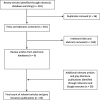Obstetric ultrasound use in low and middle income countries: a narrative review
- PMID: 30029609
- PMCID: PMC6053827
- DOI: 10.1186/s12978-018-0571-y
Obstetric ultrasound use in low and middle income countries: a narrative review
Abstract
Introduction: Although growing, evidence on the impact, access, utility, effectiveness, and cost-benefit of obstetric ultrasound in resource-constrained settings is still somewhat limited. Hence, questions around the purpose and the intended benefit as well as potential challenges across various domains must be carefully reviewed prior to implementation and scale-up of obstetric ultrasound technology in low-and middle-income countries (LMICs).
Main body: This narrative review discusses these issues for those trying to implement or scale-up ultrasound technology in LMICs. Issues addressed in this review include health personnel capacity, maintenance, cost, overuse and misuse of ultrasound, miscommunication between the providers and patients, patient diagnosis and care management, health outcomes, patient perceptions and concerns about fetal sex determination.
Conclusion: As cost of obstetric ultrasound becomes more affordable in LMICs, it is essential to assess the benefits, trade-offs and potential drawbacks of large-scale implementation. Additionally, there is a need to more clearly identify the capabilities and the limitations of ultrasound, particularly within the context of limited training of providers, to ensure that the purpose for which an ultrasound is intended is actually feasible. We found evidence of obstetric uses of ultrasound improving patient management. However, there was evidence that ultrasound use is not associated with reducing maternal, perinatal or neonatal mortality. Patients in various studies reported to have both positive and negative perceptions and experiences related to ultrasound and lastly, illegal use of ultrasound for determining fetal sex was raised as a concern.
Conflict of interest statement
Ethics approval and consent to participate
Not applicable.
Consent for publication
Not applicable.
Competing interests
The authors declare that they have no competing interests.
Publisher’s Note
Springer Nature remains neutral with regard to jurisdictional claims in published maps and institutional affiliations.
References
-
- Kongnyuy EJ, van den Broek N. The use of ultrasonography in obstetrics in developing countries. Trop Dr. 2007;37:70–72. - PubMed
-
- Kozuki N. Epidemiology, Diagnosis, and Care-seeking related to Risk Factors for Intrapartum-related Fetal and Neonatal Death in Rural Nepal [Doctoral dissertation] 2015.
Publication types
MeSH terms
Grants and funding
LinkOut - more resources
Full Text Sources
Other Literature Sources
Medical
Research Materials


